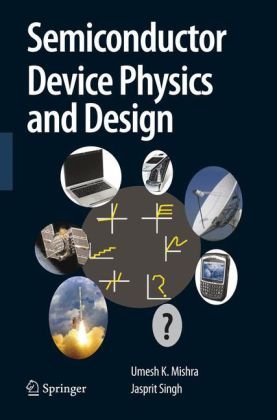

Most ebook files are in PDF format, so you can easily read them using various software such as Foxit Reader or directly on the Google Chrome browser.
Some ebook files are released by publishers in other formats such as .awz, .mobi, .epub, .fb2, etc. You may need to install specific software to read these formats on mobile/PC, such as Calibre.
Please read the tutorial at this link: https://ebookbell.com/faq
We offer FREE conversion to the popular formats you request; however, this may take some time. Therefore, right after payment, please email us, and we will try to provide the service as quickly as possible.
For some exceptional file formats or broken links (if any), please refrain from opening any disputes. Instead, email us first, and we will try to assist within a maximum of 6 hours.
EbookBell Team

0.0
0 reviewsSemiconductor Device Physics and Design provides a fresh and unique teaching tool. Over the last decade device performances are driven by new materials, scaling, heterostructures and new device concepts. Semiconductor devices have mostly relied on Si but increasingly GaAs, InGaAs and heterostructures made from Si/SiGe, GaAs/AlGaAs etc have become important. Over the last few years one of the most exciting new entries has been the nitride based heterostructures. New physics based on polar charges and polar interfaces has become important as a result of the nitrides. Nitride based devices are now used for high power applications and in lighting and display applications. For students to be able to participate in this exciting arena, a lot of physics, device concepts, heterostructure concepts and materials properties need to be understood. It is important to have a textbook that teaches students and practicing engineers about all these areas in a coherent manner.
Semiconductor Device Physics and Design starts out with basic physics concepts including the physics behind polar heterostructures and strained heterostructures. Important devices ranging from p-n diodes to bipolar and field effect devices is then discussed. An important distinction users will find in this book is the discussion presented on device needs from the perspective of various technologies. For example, how much gain is needed in a transistor, how much power, what kind of device characteristics are needed. Not surprisingly the needs depend upon applications. The needs of an A/D or D/A converter will be different from that of an amplifier in a cell phone. Similarly the diodes used in a laptop will place different requirements on the device engineer than diodes used in a mixer circuit. By relating device design to device performance and then relating device needs to system use the student can see how device design works in real world.
This book is comprehensive without being overwhelming. The focus was to make this a useful text book so that the information contained is cohesive without including all aspects of device physics. The lesson plans demonstrated how this book could be used in a 1 semester or 2 quarter sequence.